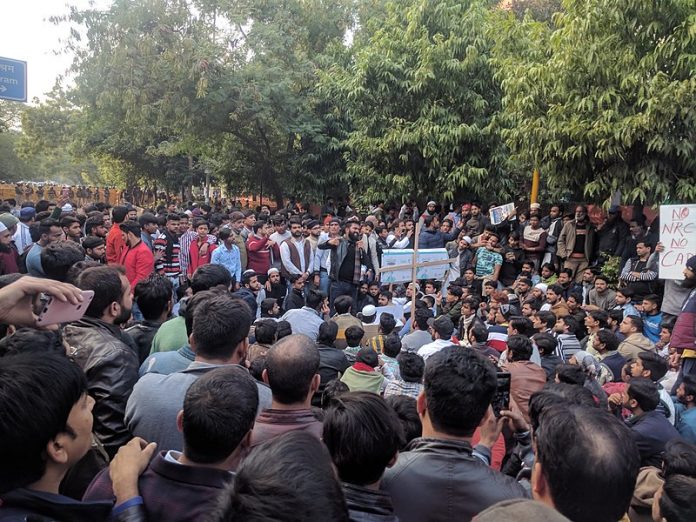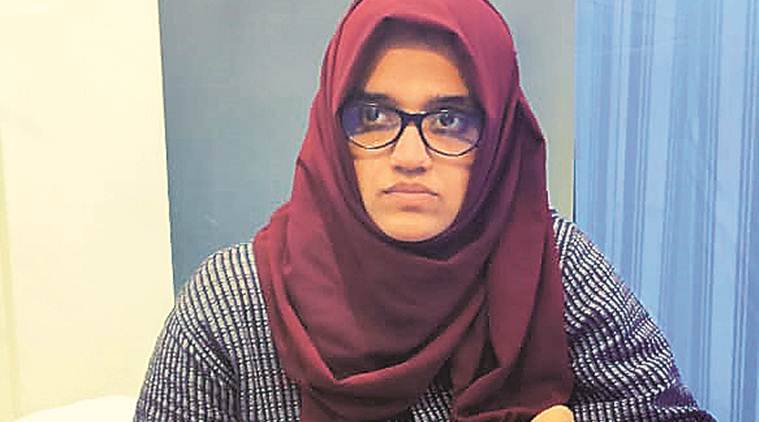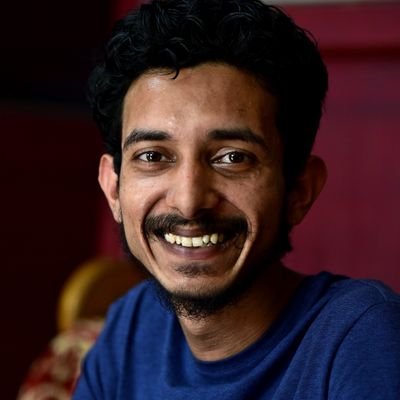
The impact of the violence on this day, two years ago, was a catalyst that made a lot of young students, concerned citizens conscious of the general narrative of the tumultuous times that we live in, especially with rise in Hindu-nationalist Bhartiya Janata Party (BJP) regime’s fanning “polarization” at every opportunity.
Ansab Amir | TwoCircles.net
NEW DELHI – On the afternoon of 15 December 2019, the Maulana Azad Library of Aligarh Muslim University (AMU) had a slight crowd around the gardens, with students trying to catch up on key concepts and make up for lost classes. Exams were going on, and for a substantial chunk of the varsity, it was crucial to balance their studies with the protests against the trifecta of Citizenship Amendment Act (CAA), National Register of Citizens (NRC), and the National Population Register (NPR).
Some 130 kilometres away, Jamia Millia Islamia (JMI) students were also performing an unenviable balancing act. Two days ago on 13 December 2019, the student’s march to the parliament was disrupted by unprovoked violence by the Delhi Police. The students were engaged with deciding what measures to undertake to carry forward the movement against CAA-NRC-NPR.
On that day, the books at the AMU library lay scattered, and the library in JMI was besieged. On the fateful evening of 15 December 2019, two of India’s most prestigious universities, bound together by their Muslim identity, faced an unprecedented attack by police forces.
The visuals of violence, of police forces barging inside hostel rooms and libraries, and of the many injuries sustained by students, have traumatized the affected students who were protesting against a law they deemed catastrophic.
However, two years later, the protests are seen as more than just a dark blot on Indian history. Students and activities argue these protests resemble a flashpoint of realizations for some and the beginnings of a larger movement for others.
“Never anticipated such carnage”
Abhay Yadav, a student of Film and Television Institute of India, Pune, was studying B.A. (English) when he and his friends were in Jamia on the night of 15 December 2019. Recalling the night, Yadav told TwoCircles.net, “A lot of students including me didn’t anticipate that the police will barge in, but then half an hour before the crackdown, I heard one university guard talking about it. They were also urging the students to be inside so that they can put a lock on the gates.”
Until that night, there was an air of security regarding campuses, especially residential campuses. That night, however, the vulnerability of those who stood up against injustice was brought starkly to light, he said.
“The violence of 15 December cannot be seen in a vacuum. The university administration has been closely hands-in gloves with the district administration in creating an atmosphere of militarization and fear. Free speech, dissent, or even simple public gatherings have actively been discouraged by them, as it threatens their control,” Talha Mannan, a student leader at AMU said.
Even as Chief Minister Yogi Adityanath praised UP Police for stopping AMU students “burn down the city”, students recognized how the state machinery was brutal in its tackling of unarmed students. “They chose to fire stun grenades and tear gas shells. They broke inside and beat up students who were running away. And then, countless cases were registered against the students they had brutally beaten up,” Tazeen Junaid, then a B.A. student at Aligarh Muslim University told TwoCircles.net. “The way the state machinery and the judiciary disheartened us was eye-opening.”
“It might just have been the last opportunity we had”
On the fateful night of 15 December, Ayesha Renna was among the four Jamia women whose photographs became icons of the anti-CAA protests, which, according to her, was a flashpoint for fighting back. “The abrogation of Article 370 in happened in Kashmir, and almost no one spoke about it. The Babri Masjid verdict came, and we were numbed into silence. If it were not for the anti-CAA protests, we might never have had the courage to demand our dignity and fight for our rights,” she told TwoCircles.net. “The kind of unforeseen violence that was unleashed against students in Jamia and Aligarh made everyone, the locals, the spectators, the neighbours come out on the streets and demand justice.”

The impact of the violence on this day, two years ago, was a catalyst that made a lot of young students, concerned citizens conscious of the general narrative of the tumultuous times that we live in, especially with rise in Hindu-nationalist Bhartiya Janata Party (BJP) regime’s fanning “polarization” at every opportunity.
“Until that event, it was difficult for me to fathom what Muslims had to go through across the country. That night the spark spurred so many movements, including the Shaheen Bagh protest in Delhi, and the numerous Shaheen Baghs across the country,” Renna said. “The violence and the subsequent fightback made us realize that we were being targeted because of our Muslim identity, and a lot of us who used to suppress or hide it for the comfort of a larger narrative then started to wear it on our sleeves, because there was no other way to fight it ”
“There is a change in the sense that there’s more fearlessness to oppose what one finds unjustified. At that time, I didn’t expect it to go on and survive, but for how long could students just stand back and be spectators to what was happening around us, in our nation?,” Abhay Yadav added.
The fight goes on
Despite there being a gap of two years since the violence erupted in AMU and JMI, the implementation of a nationwide CAA-NRC is unclear, to say the least.
The students who were involved during the protests have been paying the price to date.

Sharjeel Usmani, who was studying B. A. (Political Science) at AMU, was arrested for instigating the violence on 15 December 2019. “Despite being granted bail, I have to continuously appear for hearings. I have not been able to enrol in any of the universities that I got in, due to the legal hurdles. It is bad for me, but it is so much worse for my many friends who are still in jail, languishing under draconian laws such as the UAPA,” he told TwoCircles.net. “Any further movement cannot just be about the CAA-NRC. It will need to focus on the overall atrocities and discrimination meted out to the Muslims, and other marginalized sections of the society.”
Ayesha Renna notes, “While there is clearly a larger collective consciousness to fight the state’s atrocities, their overreaching retaliation has also resulted in the filing of multiple false cases against students, journalists, and activists.”
Among questions of reviving the movement now, Usmani replies, “This movement was necessary to bring the community out of ehsaas-e-kamtari (feeling of insecurity) to ehsaas-e-qaumiyat (feeling of community). Any question of reviving the movement must also involve the immediate release of all political prisoners, who paved the way for this bravery to be a reality.”
Ansab Amir is an intern with TwoCircles.net. He tweets at @ansab_amir.

